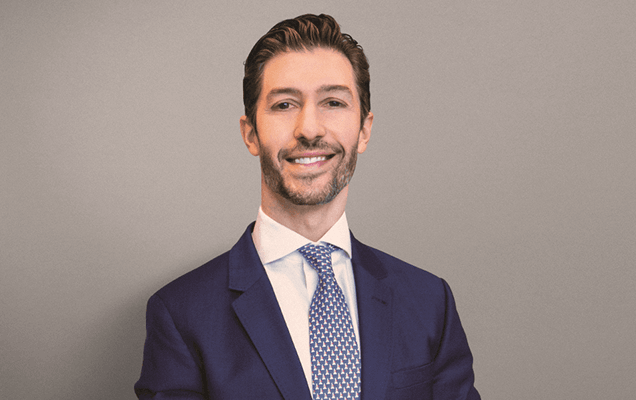If your doctor has recommended you have surgery to treat your Chiari malformation, you have likely wondered, “Can Chiari malformation come back after surgery?” While most Chiari malformations do not return after surgery, there is a possibility of returning symptoms. To help answer your question in more detail, the following information will provide an overview of Chiari malformation and treatment options, as well as what to expect after your procedure.
About Chiari Malformation
Most Chiari malformations are developmental in nature. This means that the malformation formed before you were born. As your body grows, your skull grows just large enough to fit perfectly around your brain. However, sometimes the skull doesn’t quite grow enough and the brain doesn’t have enough room. Instead, a portion at the back, the cerebellum, is displaced through a hole in the base of the skull, the foramen magnum, where the spinal cord leaves the brain.
The part of the brain that extends past the foramen magnum is called the cerebellar tonsils. These can potentially block the foramen magnum, preventing cerebrospinal fluid (CSF) from flowing normally and resulting in a buildup of pressure in the spinal cord. There may also be impingement on the spinal cord.
Chiari Malformation Surgery Options
The treatment goals of Chiari malformation surgery are to restore the flow of CSF, relieve any pressure and remove any impingement that may be damaging tissues. There are different surgical options available, and each accomplishes these goals by, essentially, creating more space.
Generally speaking, there are two approaches to Chiari malformation surgery: traditional and minimally invasive. Traditional surgical approaches use instruments and methods you would typically associate with open surgery, while minimally invasive techniques use specialized tools and microscopic visualization to achieve similar results with less disturbance to surrounding tissues.
Traditional Chiari Malformation Surgery
The most common form of traditional Chiari malformation surgery is dural-opening Chiari decompression. During this procedure, the surgeon will remove a small section of the skull as well as a portion of the dura, the membrane that covers the brain and expands the membrane with a flexible patch. This procedure is often done in conjunction with a cervical laminectomy, in which the surgeon removes a small portion of your uppermost vertebrae to help create more space for your spinal cord. Many patients benefit from this combined surgical approach.
Minimally Invasive Chiari Malformation Surgery
Minimally invasive Chiari decompression surgery is similar to its traditional predecessor but uses a smaller incision and eliminates the need for a patch. Because of the specialized instruments and techniques, the surgeon is able to create more space with less impact to the surrounding areas, typically resulting in less pain and reduced healing time.
Another minimally invasive Chiari surgical technique is posterior fossa decompression. During this procedure, the surgeon will shave down a small area of bone on the back without opening the dura to create more space for the cerebellum. Because of the less invasive nature of this approach, most patients will have improved recovery time.
Let's build your treatment path, together.
Recovery Following Chiari Malformation Surgery
Your recovery will depend on which procedure your doctor recommends as well as your personal health factors. However, generally speaking, most patients spend up to a week in the hospital recovering following Chiari malformation surgery, followed by a six- to 12-week recovery period at home.
During this time, you can expect to have restrictions on the level of physical activity you are able to perform, including household chores, lifting and potentially driving. By discussing your individual recovery with your doctor beforehand, you can have a better idea of what to expect following your procedure, allowing you to plan ahead.
Can Chiari Malformation Come Back After Surgery?
Chiari malformations will not recur following surgery. This is because they formed during your development before birth, and your brain and skull have generally completed growth by this point. However, patients will experience differing levels of relief following surgery, and sometimes, symptoms may return. Generally speaking, this happens for two reasons.
The first reason you may experience a return of symptoms is the original surgery did not achieve adequate decompression. This means there is still a buildup of pressure and/or impingement on the spinal cord. When this occurs, a second surgery may be necessary.
Additionally, some patients may experience recurring symptoms if there has been scarring following the original surgery. While minimally invasive approaches reduce this risk, some patients may require retreatment to provide further relief from symptoms. Your doctor will likely have you undergo imaging to determine whether or not additional surgery is necessary.
Your Doctor Is a Great Source of Information
Now that you understand your Chiari malformation will not come back following your surgery, you can rest a little easier knowing that your procedure will help correct the issue without recurrence. If you find that you still have questions about your personal treatment plan and what to expect following your Chiari malformation surgery, be sure to bring them up with your doctor at your next appointment. He or she will be able to give you a more detailed idea of what you can expect given your individual circumstances.

About Dr. Paul R. Gigante
Dr. Paul Gigante is an accomplished neurosurgeon in Central Jersey and a proud member of Neurosurgeons of New Jersey, practicing out of their Livingston office located conveniently on South Orange Avenue. He is recognized as a leading spine surgeon for both minimally invasive and complex procedures. Dr. Gigante is a graduate of Harvard Medical School and completed his fellowship at Stanford University in functional neurosurgery. His specialties are deep brain stimulation for Parkinson’s Disease and other nervous system disorders, spinal cord stimulation for chronic pain disorders, and surgical treatments for chronic nerve pain conditions. He also specializes in brain tumor surgeries. Dr. Paul Gigante is currently accepting new patients.






